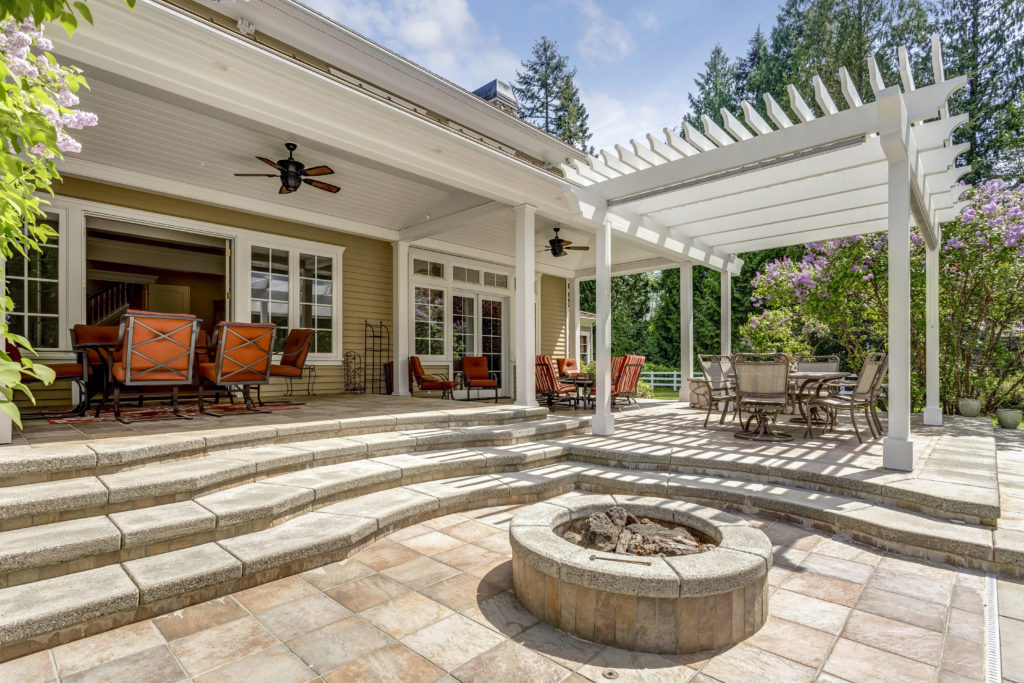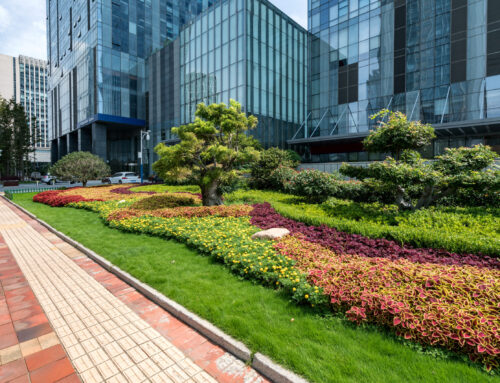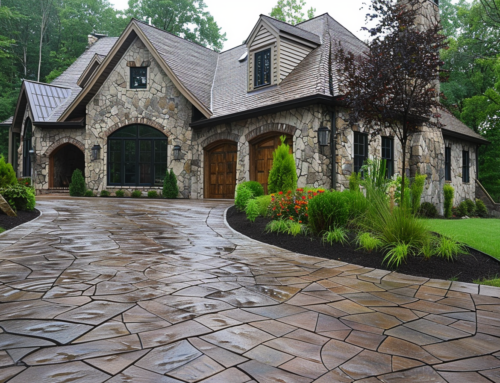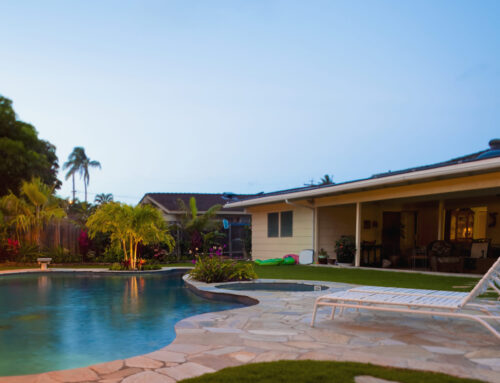Creating a beautiful and functional outdoor space involves carefully selecting the right hardscape elements to complement your landscape design.
From patios and pathways to retaining walls and water features, incorporating the right hardscape elements can enhance the overall aesthetic and functionality of your outdoor area.
In this blog, we will explore expert tips and considerations for choosing the perfect hardscape elements for your outdoor space, helping you create a stunning and inviting environment to enjoy for years to come.

Understanding Your Space
Before diving into selecting hardscape elements, it’s crucial to assess your outdoor area’s size, layout, and existing features. Consider the following factors to guide your hardscape choices:
- Size: Measure the square footage of your outdoor space to determine the scale of hardscape elements that will work best. Larger areas can accommodate more extensive features like retaining walls or a fire pit, while smaller spaces may benefit from compact elements like a cozy seating nook.
- Layout: Consider how you want to use your outdoor space and plan your hardscape elements accordingly. For example, if you enjoy entertaining, you may want to include a dining area or outdoor kitchen. If you’re looking for a relaxing retreat, a water feature or secluded seating area might be more suitable.
- Existing Features: Take note of any existing elements in your outdoor space, such as trees, slopes, or structures, and consider how hardscape elements can be incorporated to complement or enhance them.
Selecting the Hardscape Elements
When it comes to hardscape materials, there are numerous options to choose from, each with its own benefits and drawbacks. Some popular choices include:
- Stone: Natural stone, such as flagstone or slate, offers a timeless and organic look that can blend seamlessly with any landscape style. While durable and long-lasting, stone can be more expensive and may require professional installation.
- Concrete Pavers: Available in a variety of colors, shapes, and sizes, pavers provide a versatile option for creating patios, pathways, and driveways. They are relatively easy to install and maintain, making them a popular choice for DIY projects.
- Wood: Wooden elements, such as decks or pergolas, can add warmth and natural beauty to your outdoor space. However, wood requires regular maintenance to prevent weathering and decay.
- Concrete: Poured concrete is a durable and cost-effective option for creating smooth, continuous surfaces. It can be stamped or stained to mimic the look of stone or brick, offering a customizable aesthetic.
Designing Functional Spaces
When incorporating hardscape elements into your outdoor design, consider how they can enhance the structure and functionality of your space. Some ideas include:
- Entertainment Areas: Create a designated space for gatherings by incorporating a patio with comfortable seating options, outdoor dining with a kitchen, or a fire pit for cozy conversations.
- Pathways: Use pavers or stepping stones to create clear, defined pathways that guide visitors through your outdoor space and connect different areas.
- Seating Nooks: Incorporate built-in seating, such as a stone bench or a wooden swing, to provide intimate spots for relaxation and enjoyment of your outdoor surroundings.
- Retaining Walls: In addition to managing slopes and preventing erosion, retaining walls can also serve as stylish seating areas or focal points.

Using Hardscape Elements for Enhancing Aesthetics
Beyond functionality, hardscape elements can also significantly contribute to the visual appeal of your outdoor living space. Consider the following tips:
- Color: Choose hardscape colors that complement your home’s exterior and the surrounding landscape. Earthy tones like beige, gray, and brown tend to work well with most design styles.
- Texture: Incorporate a mix of textures to add visual interest and depth to your outdoor space. Combine smooth surfaces like poured concrete with rough elements like natural stone or textured pavers.
- Plant Integration: Soften hardscape elements by integrating plants and greenery. Use planting beds, borders, and potted plants to add color, texture, and life to your outdoor design.
Considering Sustainability
When selecting hardscape elements, consider their environmental impact and opt for eco-friendly options whenever possible. Some sustainability strategies include:
- Permeable Pavers: Choose permeable pavers that allow water to filter through, reducing runoff and promoting better drainage.
- Recycled Materials: Look for hardscape elements made from recycled materials, such as composite decking or recycled glass pavers, to minimize your environmental footprint.
- Native Plants: Incorporate native plants into your landscape design to reduce water consumption and support local ecosystems.
Planning and Budgeting
Before embarking on your hardscape project, take the time to plan and budget accordingly. Consider the following steps:
- Set a Budget: Determine how much you can realistically afford to spend on your hardscape project, and prioritize elements based on your budget and design goals.
- Find a Contractor: If you’re not taking the DIY route, research and hire a reputable hardscape contractor who can bring your vision to life while staying within your budget.
- Obtain Necessary Permits: Check with your local municipality to determine if any permits are required for your hardscape project, and ensure that your design adheres to any building codes or regulations.

Case Studies and Inspiration
To help inspire your hardscape design, let’s take a look at some real-world examples of outdoor spaces transformed by well-chosen hardscape elements:
- Backyard Oasis: A once-empty backyard was transformed into a stunning oasis with the addition of a flagstone patio, a cascading water feature, and a cozy outdoor fireplace surrounded by built-in seating.
- Front Yard Makeover: A plain, uninviting front yard was given new life with the installation of a winding stone pathway, a small seating area, and strategically placed planting beds filled with colorful, low-maintenance plants.
- Hillside Retreat: A challenging hillside property was tamed with the help of terraced retaining walls, which created level areas for a dining patio and outdoor kitchen while also providing built-in seating and a stunning backdrop.
Conclusion
Choosing the right hardscape elements for your outdoor space is an essential aspect of creating a beautiful, functional, and inviting environment.
By understanding your space, selecting the right materials, prioritizing functionality and aesthetics, and considering sustainability, you can transform your outdoor area into a true extension of your home.
Ready to turn your outdoor space vision into reality? Contact Bayside Landscaping today to get started on transforming your outdoor area into the oasis of your dreams.
Our team of experts is prepared to guide you through every step of the process. From planning and design to execution, we ensure your hardscape project exceeds your expectations. Don’t wait any longer to create the perfect backdrop for your family’s outdoor memories.
Contact us to schedule your consultation today and take the first step toward your dream outdoor oasis








